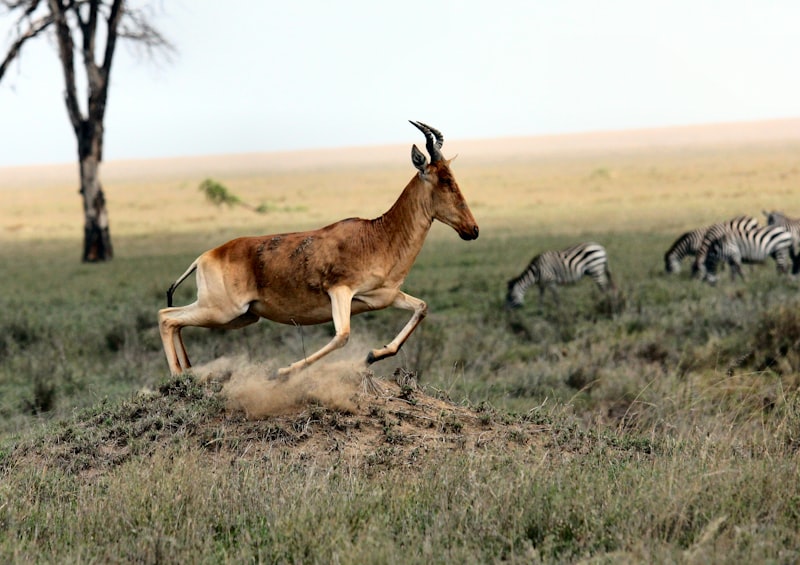Have you ever wondered about the mysterious creatures that light up like magic under UV light? These animals, known as fluorescent wonders, possess a unique ability that captivates both scientists and nature enthusiasts alike.
One of the most fascinating examples is the glowing scorpion. Found in desert regions across the globe, these arachnids emit a stunning blue-green glow when exposed to ultraviolet light. This fluorescence isn’t just for show; scientists believe it helps scorpions detect ambient light levels and even assists in identifying potential mates.
Another enchanting creature that reveals its fluorescent secret under UV light is the humble platypus. Native to Australia, this egg-laying mammal displays a fluorescent glow on its fur, beak, and webbed feet. Researchers speculate that this fluorescence may play a role in communication or possibly camouflage in their aquatic habitats.
Venturing into the ocean, coral reefs harbor some of the most visually striking fluorescent organisms. Certain species of corals and jellyfish emit vibrant colors when illuminated with UV light, creating a mesmerizing underwater spectacle. This fluorescence isn’t just beautiful; it also serves as a defense mechanism against predators and aids in attracting prey.
In the realm of amphibians, the South American polka-dot tree frog stands out with its fluorescent bones and skin. When exposed to UV light, these frogs emit a radiant blue and green glow, highlighting intricate patterns across their bodies. This phenomenon remains a subject of intense scientific interest, unlocking new insights into biofluorescence in terrestrial animals.
From scorpions to frogs and beyond, the world of fluorescent animals continues to astonish and inspire discoveries. Each glowing creature offers a glimpse into the evolutionary adaptations and ecological roles that fluorescence plays in their lives.
1. Nature’s Neon: Discovering Animals That Illuminate Under UV Light
Have you ever wondered about the hidden wonders of nature, those that only reveal themselves under special circumstances? Enter the fascinating realm of animals that glow under UV light, a phenomenon that seems straight out of a science fiction novel but is very much real. Imagine walking through a forest at night with a UV flashlight, and suddenly, you see glowing patterns on leaves, rocks, and even certain creatures. It’s like discovering a secret world within our own.
Bioluminescence, the ability of living organisms to produce light, is not limited to deep-sea creatures or fireflies. Many terrestrial animals also possess this mesmerizing trait, albeit often invisible to the naked eye. Under UV light, however, these creatures emit a fluorescent glow, revealing intricate patterns and colors that are otherwise hidden.
One such example is the flying squirrel. Known for its nocturnal habits and ability to glide effortlessly through the forest canopy, the flying squirrel’s fur contains special proteins that fluoresce under UV light. This adaptation likely helps them communicate or navigate in low-light conditions, although scientists are still unraveling its full purpose.
Another astonishing find is the platypus, an egg-laying mammal native to Australia. While it may seem unlikely, the platypus exhibits biofluorescence in its fur, which glows a soft blue-green under UV light. This peculiar trait adds another layer of mystery to an already enigmatic creature.
Moving underwater, certain fish species like the scorpionfish and coral reefs come alive under UV illumination. Their scales or skin absorb and re-emit UV light at different wavelengths, creating a vibrant display of colors that enhance their camouflage or attract mates.
Insects, too, contribute to this surreal spectacle. Beetles, spiders, and scorpions are among the many arthropods that exhibit biofluorescence. Their exoskeletons or bodily fluids contain fluorescent compounds that serve various purposes, from deterring predators to attracting prey.
The discovery of animals that glow under UV light underscores nature’s endless capacity to surprise and inspire. It reminds us that even in the darkness, there is beauty waiting to be unveiled, whether it’s in the depths of the ocean or the heart of a dense jungle. So, next time you find yourself in the presence of UV light, take a moment to look around. You might just witness nature’s neon signs, glowing silently yet brilliantly, revealing a world of wonder that defies the ordinary.
Glowing Wonders: The Astonishing World of UV-Responsive Animals
UV-responsive animals, often found in diverse ecosystems around the globe, possess a unique ability to fluoresce or change colors when exposed to UV light. This phenomenon is not just a visual spectacle but also serves crucial purposes in their lives. Imagine strolling through a forest with a UV flashlight and suddenly witnessing a seemingly ordinary frog light up in brilliant hues of green and blue. It’s like discovering a creature from a fantasy novel, yet it’s real and right before your eyes.
One of the most enchanting examples of UV-responsive animals is found in coral reefs. Under UV light, certain corals emit vivid colors that are otherwise invisible to the naked eye. It’s a breathtaking display of nature’s ingenuity and beauty, where even the smallest organisms contribute to the vibrant tapestry of the reef ecosystem.
Beyond corals, terrestrial environments also host UV-responsive wonders. Scorpions, for instance, fluoresce dramatically under UV light, with their exoskeletons glowing a ghostly green. This adaptation likely helps them in camouflage, communication, or even deterring predators. It’s a reminder that nature constantly surprises us with its adaptations for survival.

But why do these animals glow? Scientists believe UV fluorescence may play roles in communication, camouflage, attracting mates, or even warding off predators. Each species has evolved its unique way of utilizing UV light, adding layers to their already complex behaviors and interactions within their habitats.
Next time you venture into the wild with a UV light, keep an eye out for these glowing wonders. You never know what magical sight awaits you just beyond the spectrum of visible light. Nature’s UV-responsive animals are a testament to its endless creativity and the remarkable diversity of life on Earth.
Bioluminescent Marvels: Animals That Shine Bright in UV Light
Bioluminescence is a fascinating phenomenon where living organisms produce their own light through a chemical reaction. This ability isn’t just for show; it serves various purposes such as attracting mates, confusing predators, or even attracting prey. It’s like having a built-in flashlight or a neon sign, but in the animal kingdom.
One of the most famous bioluminescent animals is the firefly. These small beetles light up summer nights with their rhythmic flashes, each species having its unique pattern like a secret code. Imagine fireflies communicating through Morse code, but with light instead of sound!
Another stunning example is the glowworm, found in caves and forests. Despite their name, glowworms aren’t actually worms but larvae of beetles. They produce a soft greenish glow to attract insects into their sticky silk threads, like a natural spider’s web with a glowing lure.
The ocean depths hide some of the most spectacular bioluminescent displays. Creatures like the anglerfish use a bioluminescent lure dangling in front of their jaws to attract curious prey. It’s a deadly beauty in the dark waters where sunlight cannot penetrate.
Even some jellyfish and certain types of fish exhibit bioluminescence, creating an otherworldly glow beneath the waves. Picture a jellyfish lighting up like a floating lantern, its delicate tendrils shimmering with every movement, a sight both mesmerizing and eerie.
Nature’s creativity knows no bounds when it comes to bioluminescence. It’s a reminder that the world we see in daylight holds wonders we can’t even imagine until the sun sets. Next time you’re out at night, think about these glowing marvels that turn darkness into a spectacle.
Unveiling the Hidden Glow: UV Fluorescence in Nature’s Creatures
Have you ever wondered about the secrets hidden within the natural world? Beyond what meets the eye under normal light, there exists a fascinating phenomenon known as UV fluorescence. It’s like discovering a hidden treasure chest of colors and patterns that are invisible until illuminated by ultraviolet (UV) light.
In nature, many creatures possess this extraordinary ability to fluoresce under UV light, revealing stunning displays that captivate researchers and enthusiasts alike. From corals pulsating with neon hues in the depths of the ocean to certain flowers that emit a soft glow visible only to nocturnal pollinators, UV fluorescence adds an enchanting layer to biodiversity.
One of the most famous examples is the humble scorpion, which under UV light transforms into a glowing spectacle due to specialized chemicals in its exoskeleton. Imagine walking through the desert at night, shining a UV lamp, and seeing these tiny arachnids light up like celestial stars against the sandy backdrop.

Plants also harness UV fluorescence for their own purposes. Some flowers attract pollinators like bees and butterflies with patterns and guides that are only visible under UV light. It’s nature’s way of ensuring these vital interactions occur efficiently, even in low-light conditions.
Deep-sea organisms take UV fluorescence to another level. Bioluminescent creatures that dwell in the abyss use this phenomenon not just for visibility but also potentially for communication and defense strategies in the dark, cold depths where traditional visibility is scarce.
Even everyday objects, like minerals and certain types of rocks, can surprise us with their fluorescent properties under UV light. This natural wonder isn’t just about aesthetics; it’s a testament to the intricate adaptations and survival strategies developed over millions of years of evolution.
Next time you venture outdoors with a UV flashlight or visit a natural history museum with UV exhibits, take a moment to appreciate the hidden glow of UV fluorescence. It’s a reminder that the natural world is full of surprises, waiting to be discovered by those willing to look beyond the ordinary spectrum of light.
Beyond the Spectrum: Animals Revealed in UV-Induced Fluorescence
Have you ever wondered about the hidden world of animals that glow under UV light? UV-induced fluorescence reveals a breathtaking realm where creatures emit vibrant colors unseen by the naked eye. This phenomenon, often unnoticed in daylight, captivates scientists and nature enthusiasts alike for its sheer wonder.
In this magical realm, animals such as certain frogs, scorpions, and even fish transform under UV light into dazzling displays of neon hues. Picture a seemingly ordinary frog suddenly bathed in a brilliant green or a scorpion glowing an eerie blue. These startling transformations occur due to specialized molecules in their skin or exoskeleton that absorb UV light and re-emit it as visible fluorescence.
What makes UV-induced fluorescence even more mesmerizing is its role in animal behavior and ecology. For instance, some species may use fluorescence as a means of communication or camouflage in their natural habitats. Imagine a coral reef where fish blend seamlessly with the vibrant surroundings or a flower that guides nocturnal pollinators with its hidden UV patterns.
This natural spectacle isn’t just beautiful; it’s also a crucial area of research for scientists studying biodiversity and conservation. Understanding how and why certain animals fluoresce can provide insights into their evolutionary adaptations and ecological roles. Moreover, it underscores the importance of preserving habitats where these unique creatures thrive undisturbed.
Next time you venture into nature equipped with a UV flashlight, remember you’re not just seeing animals; you’re uncovering a luminous world beyond our ordinary perception. From rainforests to deserts, UV-induced fluorescence invites us to marvel at nature’s hidden artistry and unravel the mysteries of these glowing inhabitants.
Invisible Magic: Exploring Creatures That Light Up Under UV Rays
Imagine walking through a dense forest at night, armed with a UV flashlight. Suddenly, the forest floor comes alive with glowing patterns as scorpions, millipedes, and certain types of fungi illuminate under the beam. It’s as if a hidden realm has been unveiled, showcasing the secret lives of these nocturnal inhabitants.
Bioluminescence, the production and emission of light by living organisms, is particularly striking in marine environments. Deep-sea fish like the anglerfish use bioluminescent lures to attract prey in the darkness of the ocean depths. Jellyfish pulsate with bioluminescent light, creating a mesmerizing glow as they move through the water.
On land, fireflies are perhaps the most well-known bioluminescent creatures, their rhythmic flashes lighting up summer evenings. These flashes serve various purposes, from attracting mates to warning predators of their toxicity.
Beyond bioluminescence, fluorescence adds another layer of wonder to nature’s repertoire. Certain minerals, plants, and animals absorb UV light and re-emit it as visible light, often in vibrant colors. Coral reefs, already breathtaking during the day, transform into fluorescent wonderlands at night as corals and other marine life fluoresce under UV light.
Understanding the mechanisms behind these phenomena not only enriches our appreciation of nature but also inspires scientific inquiry into their ecological roles and potential applications in technology. Studying bioluminescent and fluorescent organisms may even lead to innovations in fields such as medicine and environmental monitoring.
The world of creatures that light up under UV rays offers a glimpse into a realm where science meets enchantment. From the depths of the ocean to the darkest corners of forests, these organisms remind us of the hidden marvels awaiting discovery in the natural world.
Secrets of the Night: UV Fluorescent Animals Under the Spotlight
In the depths of the oceans and the dense forests, there exists a phenomenon where certain animals emit a mesmerizing glow when exposed to ultraviolet light. This eerie yet enchanting glow is caused by proteins in their bodies that absorb UV radiation and re-emit it at a longer wavelength, often visible as green, blue, or even red light. It’s nature’s very own light show, invisible to the naked eye until the UV torch is switched on.
Among the most famous UV fluorescent animals are the marine creatures like corals and jellyfish. Picture diving into the ocean at night, armed with a UV light, and suddenly witnessing corals glowing in vibrant hues that seem almost otherworldly. Jellyfish, too, transform into floating lanterns, their tentacles emitting an ethereal glow that turns the surrounding water into a surreal dreamscape.
Moving from the depths of the sea to the canopies of dense rainforests, land-dwelling UV fluorescent animals include frogs and certain species of insects. Imagine walking through the Amazon rainforest after sunset, with a UV flashlight revealing frogs that appear to have stepped out of a neon art exhibit, their bodies adorned with fluorescent patterns that serve as signals in their nocturnal world.
Scientists study these creatures not just for their visual spectacle, but also for the biological mysteries they unravel. The ability to fluoresce under UV light is thought to play roles in communication, camouflage, and even protection from harmful UV rays.
Exploring the secrets of UV fluorescent animals is like uncovering nature’s hidden codes, where every glow tells a story of adaptation and survival in the dark corners of our planet. These creatures remind us that even in the quiet of the night, there is a world of astonishing beauty waiting to be discovered and cherished.
Frequently Asked Questions
Where can one observe animals glowing under UV light in nature?
Discover where you can witness animals glowing under UV light in their natural habitat. Explore unique environments like deep-sea coral reefs, certain species of scorpions in deserts, and biofluorescent fish in tropical waters. These natural phenomena highlight the fascinating adaptations of animals to their environments.
Which animals are known to exhibit fluorescence under UV light?
Discover which animals exhibit fluorescence under UV light. Learn about these unique creatures and how they use fluorescence in nature.
Are there any dangers associated with UV-induced fluorescence in animals?
Learn about the potential risks of UV-induced fluorescence in animals, including impacts on behavior and ecological interactions. Understand how this phenomenon may affect predator-prey dynamics and species survival in natural habitats.
What causes animals to glow under UV light?
Discover why some animals glow under UV light and the scientific reasons behind this phenomenon.
How does fluorescence benefit these glowing animals?
Discover how fluorescence enhances visibility and communication in glowing animals. Learn about the biological mechanisms that make certain creatures fluoresce and how this adaptation aids in attracting mates, camouflaging from predators, and identifying species in their environment.


